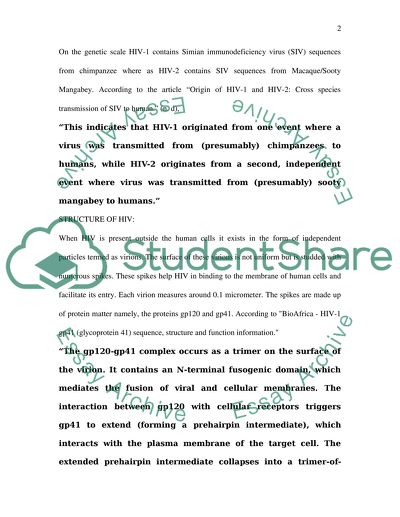Cite this document
(“Human Immunodeficiency Virus Essay Example | Topics and Well Written Essays - 2000 words”, n.d.)
Human Immunodeficiency Virus Essay Example | Topics and Well Written Essays - 2000 words. Retrieved from https://studentshare.org/health-sciences-medicine/1507825-human-immunodeficiency-virus
Human Immunodeficiency Virus Essay Example | Topics and Well Written Essays - 2000 words. Retrieved from https://studentshare.org/health-sciences-medicine/1507825-human-immunodeficiency-virus
(Human Immunodeficiency Virus Essay Example | Topics and Well Written Essays - 2000 Words)
Human Immunodeficiency Virus Essay Example | Topics and Well Written Essays - 2000 Words. https://studentshare.org/health-sciences-medicine/1507825-human-immunodeficiency-virus.
Human Immunodeficiency Virus Essay Example | Topics and Well Written Essays - 2000 Words. https://studentshare.org/health-sciences-medicine/1507825-human-immunodeficiency-virus.
“Human Immunodeficiency Virus Essay Example | Topics and Well Written Essays - 2000 Words”, n.d. https://studentshare.org/health-sciences-medicine/1507825-human-immunodeficiency-virus.


